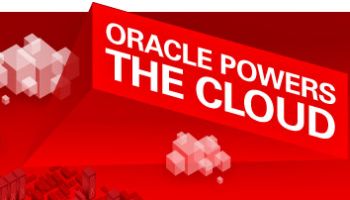Oracle Social Network Launched For Cloud

CEO Ellison took the wraps off a business Social Network to front the new Oracle Public Cloud
Oracle jumped onto the increasingly crowded social-networking bandwagon when its co-founder and CEO Larry Ellison introduced the enterprise-oriented Oracle Social Network as a key part of its evolving cloud strategy.
Ellison also took the wraps off his company’s newest cloud-oriented middleware products and strategy, called Oracle Public Cloud, in an afternoon keynote at the OpenWorld 2011 conference.
Cloud User Interface
The Oracle Public Cloud will offer companies a more centralised way to obtain integrated cloud-supported applications and infrastructure for their data centres. It will also enable IT managers faster deployment of the latest Fusion applications, middleware – not to mention databases. Naturally, it is all hosted and managed by Oracle.
 The Oracle Social Network will become the user interface for the Oracle Public Cloud. Companies will be able to control access to their own sites within the cloud, and may allow (or disallow, as needed) executives, employees, contractors, partners, customers, consultants and applicants – the entire gamut of people doing business interaction.
The Oracle Social Network will become the user interface for the Oracle Public Cloud. Companies will be able to control access to their own sites within the cloud, and may allow (or disallow, as needed) executives, employees, contractors, partners, customers, consultants and applicants – the entire gamut of people doing business interaction.
The internal network allows users not only to collaborate in real time on projects, useful information and content, but it also connects to over 100 Fusion applications currently available. These include HR, CRM, and financial and employee-benefit applications.
Like any other cloud service, the new Oracle cloud is designed to enable IT shops to get as much capacity as they need on demand. Oracle Public Cloud will also allow enterprises to toggle between software as a service (SaaS) and on-premises versions of their applications at any point after deployment, “because the apps are all built on the same code base”, Ellison said.
Ellison also announced new Oracle Fusion CRM and Human Capital Management cloud services, in addition to the Oracle Java Cloud Service and Oracle Database Cloud Service. Basically, any application, middleware, database or Web service developer can now obtain the tools and applications they need through the overall cloud service.